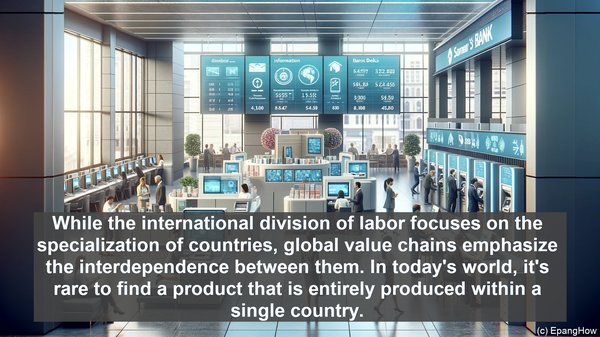Introduction: The Complexities of Global Trade
Hello everyone! Today, we’re going to explore two fundamental concepts in the realm of international trade: the international division of labor and global value chains. In an era of increasing interconnectivity, understanding these concepts is crucial for comprehending the dynamics of the global economy.
The International Division of Labor: A Historical Perspective
The international division of labor refers to the specialization of countries in specific economic activities. This specialization is often based on factors such as comparative advantage, availability of resources, and technological capabilities. Historically, this division was evident in the colonial era, where colonies supplied raw materials to the colonial powers, who in turn manufactured finished goods. However, the concept has evolved significantly since then.
Global Value Chains: A Modern Framework
Global value chains, on the other hand, represent the entire production process of a product, from its conception to its final delivery. These chains often span multiple countries, with each contributing a specific value-addition to the product. For example, a smartphone’s value chain may involve design in one country, component manufacturing in another, and assembly in yet another. This intricate network of production has become a defining feature of the modern global economy.
Interplay Between the Two Concepts
While the international division of labor focuses on the specialization of countries, global value chains emphasize the interdependence between them. In today’s world, it’s rare to find a product that is entirely produced within a single country. Instead, countries contribute their expertise and resources at different stages of the value chain, creating a web of economic interdependence. This interplay has both benefits and challenges.
Benefits: Efficiency and Market Access
One of the key advantages of global value chains is the potential for increased efficiency. By specializing in specific tasks, countries can leverage their strengths, leading to cost savings and improved productivity. Additionally, these chains provide access to larger markets. A country may not have a significant domestic market for a particular product, but by participating in a global value chain, it can tap into the demand from other countries.

Challenges: Vulnerabilities and Inequality
However, global value chains also come with challenges. The intricate nature of these chains means that disruptions in one country can have ripple effects across the entire chain. For example, a natural disaster or a trade dispute can disrupt the supply of a critical component, impacting the final product’s availability. Moreover, there are concerns about inequality, as not all countries benefit equally from participating in these chains. Some may be relegated to low-value tasks, limiting their economic growth potential.

